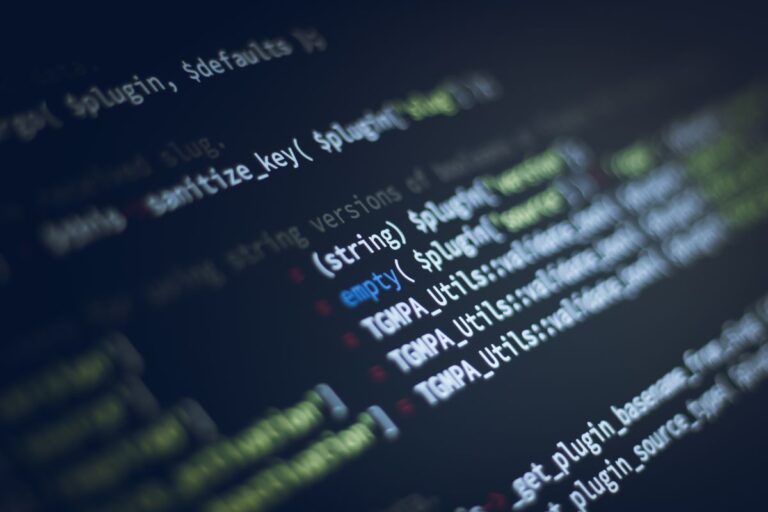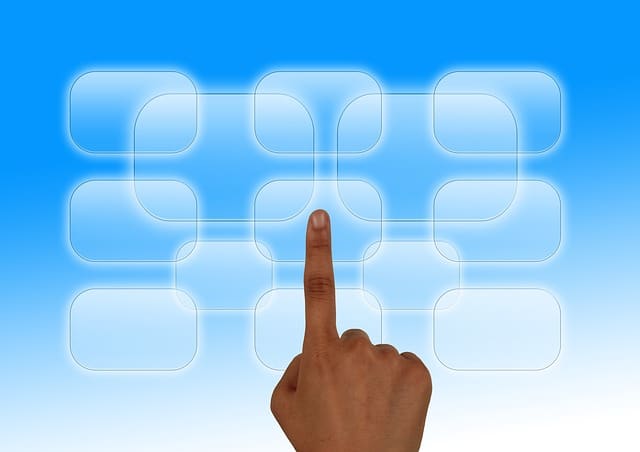10 Must-Have Features for Your WordPress Website in 2025
As we are living now in 2025, the digital landscape continues to evolve, making it imperative for business owners to equip their WordPress websites with cutting-edge features that enhance user experience and drive engagement. With the right blend of innovation, functionality, and security, your website can become a dynamic portal that captivates audience attention and boosts business growth. This guide explores the top 10 must-have features you should consider for your WordPress site in 2025, empowering you to stay ahead of the curve and ensure your digital presence is both competitive and engaging in the ever-changing online marketplace.
Key Highlights
- AI customization enhances user-centric design, adapting to individual preferences for competitive WordPress websites in 2025.
- Headless WordPress architecture delivers exceptional performance by decoupling frontend and backend systems.
- Voice search optimization is crucial for seamless, conversational user interactions on WordPress platforms.
- Prioritizing accessibility ensures inclusive digital experiences on WordPress, vital for audience engagement.
- Augmented Reality integration enriches WordPress sites through immersive, interactive user experiences.
1. Embracing AI-Powered Design Customization
AI-powered design customization is revolutionizing the WordPress world by enhancing both aesthetic elements and functional capabilities. Business owners are rapidly adopting this trend, recognizing its potential to create user-centric designs that adapt to individual preferences. As part of WordPress’s must-have features for 2025, incorporating artificial intelligence in your WordPress website not only tailors the layout but also optimizes the user journey. Seamless integration of these technologies ensures your website design remains competitive. Let’s delve into how embracing AI customization can enhance the overall user experience, making your site stand out.
|
Feature |
User Benefit |
Tools/Plugins |
Future Trends |
|---|---|---|---|
|
Automated Layout Customization |
Enhances aesthetic appeal and usability by adapting layouts to user behavior |
AI Builders |
Increasing personalization accuracy through machine learning advancements |
|
Intelligent Content Suggestions |
Boosts engagement by presenting users with relevant content |
Jetpack AI, ContentBot AI-GPT |
Real-time content customization based on user interaction patterns |
|
AI-Driven SEO Optimization |
Improves site visibility and search rankings efficiently |
Yoast SEO with AI, RankMath AI |
Seamless integration of voice and visual search capabilities |
|
Chatbot Integration |
Enhances customer support and interaction efficiency |
ChatBot for WordPress, IBM Watson Assistant |
Increased use of AI in predictive customer service |
|
Automated Accessibility Improvements |
Makes websites more inclusive and accessible to all users |
AccessiBe WP, UserWay AI |
Advancements in AI-driven compliance and adjustments |
This table encapsulates how AI-driven personalization is redefining WordPress design for enhanced user engagement in 2025.
Enhancing User Experience with Personalization
The application of AI in WordPress website design isn’t just a futuristic concept—it’s a key feature that’s actively transforming user interactions in 2025. By focusing on personalization, AI makes each user’s experience unique, significantly improving engagement. This isn’t achieved through generic settings but by leveraging advanced algorithms that adapt to individual user behaviors and preferences.
With AI, your website can recommend content, adjust layouts, and even change color schemes based on user interaction, making the entire experience more engaging and tailored. Integrating personalized elements on your WordPress website doesn’t require complex coding skills. With the rise of intuitive WordPress plugins, even non-tech savvy business owners can implement these features seamlessly. These plugins allow for sophisticated personalization, using data insights to craft a dynamic and responsive user environment. For instance, AI can analyze browsing habits to suggest products or articles that align with user interests, thereby keeping them engaged longer and potentially increasing conversion rates.
Moreover, as we look toward the trends of 2025, personalization is becoming synonymous with user satisfaction. Visitors now expect a website experience that feels personal and relevant. This means that WordPress developers need to focus on features that cater directly to this demand. Plugins that offer AI tools for personalization must be part of your arsenal, ensuring your site meets not only basic operational needs but also excels at creating a memorable user journey. By embracing AI-powered personalization, your WordPress website design transforms from static to dynamic. This transition isn’t just about aesthetics – it’s about building a connection with your visitors that resonates well beyond their initial visit. As trends continue to evolve, the emphasis on personalized user experience will undoubtedly be a central theme, making it an essential strategy for businesses aiming to thrive online.
The benefits of AI-powered personalization in enhancing user experience on WordPress websites are significant. Consider these practical steps to implement effectively:
- Utilize AI analytics to gather actionable insights on user behavior.
- Integrate smart content recommendations to increase user engagement.
- Employ dynamic layout adjustments based on user interaction patterns.
- Enable custom color scheme adaptations for individual visual preferences.
- Leverage intuitive plugins to streamline personalization processes.
- Set up automated A/B tests to optimize personalization strategies.
- Implement targeted product suggestions to boost conversion rates.
- Develop feedback loops to refine personalization efforts continuously.
These strategies ensure your WordPress site provides a seamlessly personalized user experience that captivates and retains visitors.
Based on the importance of personalization in enhancing user experiences, consider these effective strategies to implement on your WordPress site:
- Utilize AI-driven content recommendations to align offerings with user interests and boost engagement.
- Implement adaptive layout designs that respond to user behavior for a more interactive experience.
- Leverage user data insights for dynamic product suggestions that can increase conversion rates.
- Incorporate intuitive WordPress plugins for seamless integration of personalized features without complex coding.
- Enable color scheme adjustments based on user interactions to create a visually appealing environment.
- Create a responsive interface that evolves with emerging trends in personalized user experience.
Embrace these strategies to ensure your website remains at the forefront of user experience innovation.
2. Effective Website Design Strategies for 2025
In 2025, website design stands on the cusp of a digital transformation, intertwining aesthetics with functionality to create immersive experiences. As a WordPress developer, it’s crucial to focus on implementing modern design strategies that ensure your site isn’t just visually appealing but also highly functional. Discover the seamless integration of contemporary design trends, advanced WordPress features, and essential plugins that will keep your site relevant and engaging for your users. This year promises innovations that are both trendy and effective, setting the stage for websites that connect deeply with audiences while maintaining robust performance.
|
Design Element |
Purpose |
Tools/Plugins |
|---|---|---|
|
Responsive Design |
Ensure website accessibility across all devices |
Elementor, WPBakery Page Builder |
|
Minimalist Aesthetics |
Enhance user focus and improve load times |
GeneratePress Theme, Astra Theme |
|
Interactive Features |
Boost user engagement and interactivity |
Ninja Forms, Slider Revolution |
|
SEO Optimization |
Improve site visibility and search engine ranking |
Yoast SEO, Rank Math |
|
Content Personalization |
Deliver tailored user experiences |
OptinMonster, Personalize for WP |
This table underscores the synergy between modern design elements and functionality, illustrating how WordPress developers can leverage innovative tools to create engaging user experiences in 2025.
Incorporating Modern Aesthetics and Functionality
As we venture into 2025, the emphasis on website design shifts towards merging modern aesthetics with functionality. This combination isn’t just about making your WordPress website look good—it’s about offering an experience that resonates with users. To achieve this, focus on incorporating key features that simplify navigation, enhance interaction, and streamline content delivery. Engaging designs leverage intuitive CMS platforms like WordPress, known for their adaptability with various plugins that enhance user experience.
A modern WordPress website thrives on clean design and efficiency, utilizing vibrant, responsive layouts that are both dynamic and user-friendly. With new trends emerging, ensuring your website has the latest WordPress features will be pivotal. Consider implementing a minimalistic design strategy. This involves using ample white space, bold typography, and high-quality images that not only beautify but also enlighten the content, supporting key content without overwhelming visitors. Additionally, plugins play a pivotal role in enhancing functionality.
Try incorporating plugins designed to boost performance and engage users—live chat functionalities, social media integrations, and advanced analytics tools can transform user interactions and foster a sense of community. Furthermore, these plugins allow the website design to adapt rapidly, ensuring it reflects the latest trends and user demands. The future of design isn’t just a concept, it’s a bold step towards creating websites that marry style with substance.
As a WordPress developer under the Deon Designs banner, your commitment to crafting cutting-edge digital experiences will remain central. Stay proactive in incorporating these evolving trends and ensure your website not only stands out in 2025 but becomes a benchmark for effective design and functionality. Leveraging the latest CMS features, your venture into 2025 can turn aspirations into impactful realities.
To stay ahead of design trends and technological advancements, embracing modern aesthetics and enhancing functionality in your WordPress website is crucial. To further enhance your WordPress website in 2025, consider the following key strategies:
- Adopt Minimalistic Design:
Prioritize clean layouts and ample white space to create a professional and elegant look. - Utilize Dynamic Typography:
Employ variable fonts to add a unique touch and improve readability while keeping the website visually appealing. - Integrate AI-driven Personalization:
Use AI technology to deliver personalized content and recommendations based on user behavior, increasing engagement and conversion rates. - Leverage Progressive Web Apps (PWAs):
Implement PWA features to enhance user experience with faster loading times and offline functionality, providing a near-native app feel. - Incorporate Interactive Elements:
Engage visitors with interactive features such as quizzes, polls, and animations that captivate and encourage user interaction. - Focus on Mobile Optimization:
Ensure your website is fully responsive and optimized for mobile users, as a majority of traffic now comes from handheld devices. - Enhance Accessibility Standards:
Implement accessibility features such as voice navigation, screen reader compatibility, and keyboard-friendly interfaces to accommodate all users. These strategies will ensure your website not only looks modern but also delivers a seamless and engaging user experience that aligns with the digital trends of 2025.
3. Optimizing for Voice Search Functionality
As we move towards 2025, optimizing your WordPress website for voice search has become critical in staying ahead in digital engagement. This feature is not just a passing trend; it’s a pivotal shift in how users interact with technology, fundamentally altering website design and development. Voice search is increasingly popular among users who seek convenience and speed. By enhancing your website with the right WordPress features, plugins, and design strategies, you can ensure seamless voice search functionality that meets user expectations and elevates your website’s user experience to the next level.
|
Key Feature |
Impact on User Experience |
Implementation Strategy |
|---|---|---|
|
Natural Language Processing (NLP) |
Enhances understanding of user queries, leading to more relevant search results. |
Integrate advanced NLP plugins compatible with WordPress to facilitate nuanced query analysis. |
|
Schema Markup |
Improves visibility in voice search outputs by providing structured data. |
Utilize schema markup plugins or manual coding to format content for better search interpretation. |
|
Mobile Responsiveness |
Ensures seamless compatibility with mobile devices, a primary source for voice searches. |
Adopt a responsive WordPress theme and test across multiple devices for consistent performance. |
|
Page Load Speed |
Fast loading times enhance the likelihood of content being used in quick voice search responses. |
Optimize images, enable caching, and use clean coding practices to increase page speed. |
|
Conversational Content |
Aligns content tone with typical voice search queries, leading to higher user engagement. |
Create content that anticipates and answers common spoken queries clearly and concisely. |
|
Security Measures |
Protects user data integrity and builds trust, crucial for increasing site engagement. |
Implement HTTPS protocols and regularly update plugins and themes to ensure site security. |
This table summarizes essential features for integrating voice search on WordPress sites, highlighting how they can enhance user engagement along with strategic implementation approaches.
4. How Voice Search is Shaping Online Interactions
Voice search has emerged as a transformative force in how users engage with content online, driven by advancements in voice recognition technology and the growing presence of smart devices. For WordPress websites, this means integrating voice search functionality isn’t just about staying trendy; it’s about fundamentally enhancing the user journey.
One of the key features of voice search is its ability to provide answers quickly and efficiently, improving the user experience by reducing friction and making navigation more intuitive. For WordPress developers and business owners alike, understanding the nuance of this feature is crucial. Implementing voice search capabilities requires a rethinking of how content is structured to ensure it aligns with natural language patterns. This includes optimizing website design to handle conversational queries and using structured data that allows search engines to interpret and deliver your content effectively.
As more users turn to voice queries, compliant WordPress plugins become a necessary addition, ensuring your website can handle increased demand for auditory interactions. Additionally, voice search is reshaping SEO strategies. Traditional text-based keywords must adapt to long-tail phrases that mimic how real people speak. This shift calls for a more complex approach to keyword integration and highlights the importance of updating WordPress features regularly to accommodate these changes.
By leveraging specific plugins designed to address voice search optimization, website owners can maintain a competitive edge. These plugins facilitate enhancements without requiring extensive coding skills, keeping the process streamlined and effective. In the context of 2025’s digital landscape, ignoring voice search means potentially missing out on a growing segment of users who rely on this feature for its accessibility and ease. As a WordPress developer working with Deon Designs, embracing this evolution not only aligns with modern trends but also ensures your projects are future-proofed. Adapting to voice search ensures your website remains relevant, engaging, and equipped to meet the dynamic needs of today’s users. Making sure your WordPress website design supports voice interactions can significantly enhance user experiences and, in doing so, keep your web presence robust and dynamic.
List of Effective Strategies for Optimizing WordPress Websites for Voice Search:
- Utilize schema markup to help search engines understand and present content.
- Optimize content for natural language queries and conversational tones.
- Focus on mobile-friendly design elements that enhance voice search interactions.
- Implement FAQ sections to address common questions directly.
- Ensure fast loading times to accommodate quick voice query responses.
- Integrate voice search plugins that are frequently updated for compatibility.
- Regularly analyze voice search data to refine and adjust strategies.
Adopting these strategies will help your WordPress site thrive in a voice-first world, ensuring accessibility and relevance.
5. The Benefits of Headless WordPress for Performance
Headless WordPress is revolutionizing the landscape of website design by decoupling the frontend from the backend, allowing for unparalleled performance boosts and flexibility. As we approach 2025, the integration of headless architecture is becoming a staple among WordPress developers seeking to optimize their site’s capabilities. It empowers developers to use modern technologies independently, significantly decreasing load times and enhancing user experiences. Let’s explore how adopting a headless approach can make your WordPress website faster, more adaptable, and ultimately, more competitive.
Exploring Faster and More Flexible Websites
In the push for faster and more flexible websites, headless WordPress is emerging as a game-changer. By separating the frontend presentation from the backend content management, this architecture streamlines how data is delivered to users, dramatically lowering load times. On a traditional WordPress website, all features and plugins are tightly integrated, which can burden the system and degrade performance. In contrast, a headless setup uses APIs to feed data efficiently, enabling rapid performance enhancements.
Utilizing headless WordPress also opens doors to device-specific experiences. Without being tied down by the limitations of a single system, developers can create custom frontends that leverage the latest trends and technologies, like JavaScript frameworks, to build highly responsive and user-friendly designs. By adopting this method, your WordPress website can deliver dynamic content across various platforms seamlessly. This level of flexibility allows you to focus on user experience optimization without being constrained by traditional backend limitations. Moreover, the adoption of a headless approach simplifies the integration of third-party services, creating opportunities for more personalized and engaging user interactions.
Whether incorporating cutting-edge WordPress features or deploying essential plugins, you can manage your digital assets more effectively and customize the user interface as needed. This adaptability is crucial as businesses strive to stay relevant in the fast-paced world of 2025, marked by rapid technological advances and shifting user expectations. Implementing a headless system doesn’t mean losing familiar WordPress functionalities. Instead, it enhances your website design by combining the strengths of WordPress CMS with innovative frontend technologies. This setup also paves the way for better SEO practices by allowing you to construct structured content that’s easily indexed and more visible to search engines, ultimately boosting your online presence.
As digital strategies evolve, embracing headless WordPress ensures your website remains at the forefront of innovation, ready to meet the challenges and opportunities of the future. Stay ahead by integrating these key features into your WordPress projects to harness the potential of speed and flexibility effectively.
Key Features for Headless WordPress Projects
- Utilize APIs for efficient data delivery and integration.
- Implement JavaScript frameworks for enhanced frontend development.
- Design device-specific, responsive user interfaces.
- Facilitate seamless integration of third-party services.
- Customize SEO strategies to improve search engine visibility.
- Focus on modular, scalable architecture for future growth.
- Leverage cloud services to boost performance and reliability.
Incorporating these features will ensure your website is optimized for a fast-paced digital landscape.
6. Integrating Augmented Reality for Interactive Content
Augmented Reality (AR) is transforming how we interact with websites, offering an enriching blend of reality and digital elements. As businesses look towards the future, incorporating AR into your WordPress website design stands out among essential trends. AR isn’t just an engaging novelty; it’s a powerful tool to improve user experience by providing immersive interfaces that foster deeper connections. With WordPress plugins evolving rapidly, integrating AR becomes increasingly accessible, enabling developers to deliver high-functioning, visually captivating experiences. Discover how AR can elevate your website to meet the demands of a tech-savvy audience in 2025.
|
AR Benefit |
Application Area |
WordPress Compatibility |
|---|---|---|
|
Enhanced User Engagement |
Product Visualization |
AR Plugins Available |
|
Interactive Learning |
Educational Content |
Theme Integration Options |
|
Increased Conversion Rates |
Online Retail |
eCommerce Compatibility |
|
Immersive Storytelling |
Blog/Media Content |
Customizable Widgets |
This table highlights the transformative potential of integrating AR into WordPress, enhancing user engagement through seamless, immersive experiences.
Engaging Users with Immersive Experiences
In an era where digital interaction is evolving at breakneck speeds, the incorporation of Augmented Reality (AR) into WordPress websites provides an innovative way to engage users effectively. As a WordPress developer, harnessing the capabilities of AR can transform user experience by creating immersive, interactive environments that captivate and retain user attention. Unlike traditional content, AR enriches the user journey with dynamic elements, blending real-world settings with digital enhancements to offer a personalized touch on every page. AR technology supports various applications, from virtual try-ons in e-commerce to interactive learning components in educational sites.
The seamless integration of AR into your WordPress website can significantly enhance website design, offering users a compelling reason to return. By leveraging WordPress features like responsive themes and the latest plugins, developers can incorporate AR without extensive backend overhauls. These plugins, such as AR.js or UNITY, are designed to simplify AR deployment, allowing even non-expert users to implement this cutting-edge technology. One of the key features of AR is its ability to tell stories in a way that engages users on a deeper level. Imagine a travel website where visitors can virtually explore destinations, or a real estate portal offering a walk-through of properties right from their homes. Such AR-fueled features represent more than just entertainment—they deliver unique value to your audience, promoting early customer loyalty and conversion through engaging, persuasive content.
To ensure successful AR integration, focus on personalized user experiences. Design your AR elements to be intuitive, ensuring they align with your overall WordPress website strategy. Use plugins that enhance rather than clutter the user interface, and prioritize speed and responsiveness to keep the AR experiences smooth. As trends continue to shift and technology advances, implementing AR isn’t merely an option; it’s a strategic move to retain competitiveness and expand your content delivery horizons. Embrace this trend, and your WordPress website will not only captivate but also convert, fostering a stronger connection with your audience as we move deeper into the digital landscape of 2025.
Implementing augmented reality (AR) on WordPress websites can significantly enhance user engagement by creating immersive and interactive experiences that captivate visitors.
- Choose the right AR plugin for WordPress that offers robust features and is compatible with your existing site architecture.
- Optimize your website’s loading speed to ensure that AR elements run smoothly without causing delays or interruptions.
- Create high-quality AR content that is relevant and adds value to the user’s experience on your website.
- Ensure that AR elements are mobile-friendly since a significant amount of web traffic comes from mobile devices.
- Integrate AR features seamlessly into the user interface to maintain a consistent and cohesive design.
- Provide clear instructions and guidance on how users can interact with the AR content effectively.
- Regularly update and test AR elements to improve functionality and fix any issues that may arise.
- Analyze user feedback and engagement metrics to refine and enhance the AR experience continuously.
By implementing these strategies, website owners can harness the power of AR to create compelling experiences that increase user engagement and interaction, ultimately leading to higher retention rates and a more dynamic presence on WordPress platforms.
7. Prioritizing Data Protection and Security
In the ever-evolving landscape of digital threats, prioritizing data protection and security on your WordPress website is more crucial than ever. With increasing cyber threats, safeguarding both user and business data has become one of the essential features for online platforms in 2025. Implementing robust security measures not only protects sensitive information but also enhances user trust and site credibility. Let’s explore best practices and key features that ensure your WordPress site remains secure, leveraging cutting-edge plugins and trends to bolster your defenses effectively.
Implementing Best Practices to Safeguard Information
To effectively secure a WordPress website in 2025, adopting comprehensive best practices tailored to evolving threats is essential. At the foundation of data protection lies the importance of using strong passwords and two-factor authentication. These practices act as the first line of defense against unauthorized access, ensuring that only verified users can engage with sensitive site areas. Regularly updating all WordPress features, themes, and plugins is equally crucial. Such updates often include security patches addressing known vulnerabilities, thereby fortifying your website against the latest threats.
Furthermore, integrating reliable WordPress plugins specifically designed for security, like Wordfence or Sucuri, can substantially boost your site’s defenses. These plugins offer real-time monitoring, firewall protection, and malware scanning, empowering you to identify and neutralize potential security breaches swiftly. The use of backup solutions also complements these efforts by preserving your website’s integrity. Regular backups ensure that data loss, whether due to an attack or system failure, doesn’t result in permanent damage, allowing for quick recovery and continuity of operations. Encrypting data transmissions with an SSL certificate is another key feature that enhances user trust. Encryption protects sensitive information exchanges, such as login credentials and payment data, keeping them out of malicious hands. Search engines like Google also favor SSL-secured sites, providing an SEO boost in addition to protecting user data. Implementing a comprehensive security protocol isn’t just about ticking boxes; it’s about creating a secure environment that supports your online business goals.
Additionally, stay informed on emerging security trends and anticipate potential risks by participating in relevant forums and communities. By keeping abreast with the latest security developments in WordPress, you’ll be better equipped to implement proactive measures. Emphasizing data protection not only safeguards your online presence but also ensures a seamless, trustworthy experience for users. As you continue to build and refine your WordPress website, integrating robust security features should remain a top priority, helping you maintain a competitive edge in the digital marketplace.
As you seek to further enhance your website’s security, consider implementing the following additional strategies:
- Implement Multi-Factor Authentication (MFA)
- Conduct Regular Security Audits and Vulnerability Assessments
- Use a Web Application Firewall (WAF)
Incorporating these strategies will reinforce your website’s defenses, ensuring safety and stability for both your business and its users.
8. Essential Accessibility Enhancements
In 2025, incorporating accessibility into your WordPress website is no longer optional—it’s an essential feature. Prioritizing accessibility ensures that your site is usable for everyone, including those with disabilities. As we create more inclusive digital spaces, WordPress developers must focus on innovative features and plugins designed to enhance accessibility. Let’s explore how these key elements can transform your website design, ensuring it’s welcoming and user-friendly for all visitors. From improved navigation tools to responsive design, discover the strategies that make accessibility a priority in modern website trends.
Making Your Website Usable for Everyone
As a WordPress developer, one of your pivotal roles is to craft websites that are accessible to the widest range of users possible. In the context of 2025, accessibility isn’t just a box to check; it’s a core aspect of user experience that reflects the values and commitments of modern businesses. Enhancing accessibility on your WordPress website involves integrating both basic features and advanced plugins that support a diverse audience, including those with visual, auditory, or motor impairments. To make your WordPress website usable for everyone, start by ensuring your content is screen reader friendly. Tools like Accessible WP can automate the process, translating elements on your site into formats that screen readers can interpret, enhancing navigation for visually impaired users.
Additionally, making use of alt tags for images is a simple yet effective strategy to provide descriptive alternatives for non-visual users. Another critical feature is the incorporation of adaptable user interfaces. This means designing your website to be responsive across all devices and adjusting functionalities for different input methods. With the growing trends towards mobile-first design, your WordPress website should be optimized to handle various pixel densities and interaction styles, offering seamless use for touch, voice, and keyboard navigation. Plugins play a vital role in enhancing your website’s accessibility.
WordPress plugins such as WP Accessibility provide a comprehensive suite of tools to address common accessibility issues. They allow for improvements like color contrast adjustments, scalable fonts, and keyboard navigation aids, making the website more interactively inclusive. These enhancements not only facilitate a better user experience but also align with SEO best practices, as search engines increasingly prioritize accessible and user-friendly websites. At Deon Designs, focusing on inclusive design is part of our commitment to crafting experiences that welcome every user. By implementing these accessibility features, you’re not only complying with legal standards but also expanding your audience reach and engagement.
Remember, an accessible website speaks volumes about your brand’s dedication to inclusion and innovation. In a digital landscape governed by rapid technological advances, ensuring your WordPress website is accessible is not just beneficial—it’s fundamental to thriving in today’s global market. Let’s make it our mission to build digital spaces that are not just accessible by necessity but also by choice, inviting everyone to partake in the rich tapestry of online content and community.
Suggestions for Enhancing Accessibility on a WordPress Website
- Skip to Content Links: Implement skip navigation links to allow users to bypass repetitive menu items and go directly to the main content.
- High Contrast Mode: Provide a toggle for high contrast mode to assist users with visual impairments in seeing visual elements more clearly.
- Audio Descriptions: Incorporate a plugin that provides audio descriptions for video content, ensuring users with visual disabilities can fully understand the multimedia content.
- Readable Typography: Use plugins or themes that allow for adjustable font sizes and easy-to-read typefaces to enhance text readability.
- Accessible Form Plugin: Utilize a plugin like WPForms or Gravity Forms that includes features such as screen reader labels, alternate CAPTCHAs, and keyboard navigation for form elements.
- Accessibility Checker Plugin: Integrate a tool like the WP Accessibility Checker or AccessiBe to monitor your site’s compliance with accessibility standards and provide actionable feedback.
Continuously evolving accessibility features is crucial in providing an inclusive experience for all users. Regularly incorporating new tools and updates ensures your website remains accessible to individuals with diverse needs, ultimately enriching the user experience and broadening audience engagement.
9. The SEO Impact of Must-Have Features
In the ever-evolving digital marketplace, implementing must-have features on a WordPress website can significantly boost your SEO efforts. As 2025 unfolds, business owners need to understand how key features, such as advanced plugins and strategic design elements, can enhance their site’s visibility and performance. These features not only support search engine optimization but also enhance user experience by making navigation intuitive and content more engaging. As we delve into the most effective strategies, you’ll discover how to effectively use these tools to boost your website’s search ranking and user satisfaction.
|
Feature |
SEO Benefit |
User Experience Impact |
Implementation Tools/Plugins |
|---|---|---|---|
|
Responsive Design |
Improves mobile search rankings |
Ensures accessibility on any device |
Elementor, WPtouch |
|
Fast Loading Speed |
Enhances search ranking factors |
Reduces bounce rate, retains visitors |
WP Rocket, W3 Total Cache |
|
Schema Markup |
Provides rich results in search engines |
Offers enhanced visual search results |
Yoast SEO, Schema Pro |
|
SSL Certificate |
Boosts search engine trust and rank |
Increases user trust and session duration |
Let’s Encrypt, Really Simple SSL |
This table highlights the multifaceted role that essential WordPress features play in enhancing SEO and user engagement, positioning your site favorably in the competitive digital marketplace of 2025.
10. Boosting Visibility Through Strategic Design
As a WordPress developer, crafting a website with strategic design will be crucial for boosting visibility in 2025. Your WordPress website mustn’t only be a digital storefront—it’s an interactive platform that answers users’ queries, often influenced by the latest SEO trends. A well-designed website seamlessly combines aesthetics and functionality, enhancing user engagement while aligning with Google’s algorithm preferences. One strategic design element is the use of structured data to facilitate better indexing by search engines. By incorporating breadcrumbs, you create a more navigable site that keeps users engaged and informs search engines your content’s structure, which is crucial for SEO.
Furthermore, voice search is no longer a secondary consideration; it’s a vital part of your design strategy. Adapting your WordPress website to optimize for voice queries involves reshaping your content to answer conversational questions. This means using long-tail keywords in a way that mimics natural speech patterns. WordPress plugins, like voice search optimization tools, help developers fine-tune content for vocal interactions, making your site more accessible to a growing audience who favor voice-assisted browsing. Another critical factor is the use of adaptive and responsive design. Aesthetically pleasing, mobile-first designs are not merely a trend but a necessity, impacting how search engines rank your site. By prioritizing user experience through responsive WordPress features, you ensure your site adjusts impeccably across devices, maintaining consistency in user interaction. Light, fast-loading themes supported by top-tier hosting solutions further ensure minimal page load times—a factor directly affecting SEO.
As you integrate these strategies, leveraging WordPress plugins that enable easy management and updates of SEO settings becomes essential. These plugins offer structured data management and automated improvements, reducing complexity for business owners while enhancing their site’s discoverability. In conclusion, strategic design is about smart, user-centric decisions that intertwine cutting-edge WordPress features with practical SEO enhancements. A thoughtfully designed WordPress website doesn’t just accommodate user needs; it anticipates them, elevating both experience and visibility. By leveraging these design strategies in 2025, you’re not just improving a digital space—you’re crafting a competitive edge in the vast, continuously evolving digital landscape. Partner with Deon Designs to ensure your website thrives with the must-have features that not only refine user journeys but also bolster ranking performance through meticulously crafted design.
Here are specific steps to elevate your WordPress website design for enhanced visibility in 2025:
- Optimize web pages for faster loading times to reduce bounce rates and improve user engagement.
- Incorporate AI-driven personalization to tailor content dynamically based on user behavior and preferences.
- Enhance mobile responsiveness to ensure a seamless experience across all devices, addressing the growing mobile-first audience.
- Utilize SEO best practices, integrating the latest schema markup for improved search engine visibility.
- Implement intuitive navigation design to streamline the user journey and facilitate easy access to key content.
- Leverage analytics-driven insights to iterate design based on real user interaction and feedback.
- Integrate social sharing features to boost content reach and foster community engagement organically.
Integrating these steps will prepare your WordPress site to meet and exceed user expectations in the coming year.
Incorporating these 10 must-have features into your WordPress website by 2025 will not only future-proof your online presence but also enhance user experience, engagement, and conversion rates. Deon Designs is committed to staying ahead of the digital curve, offering expert development services that integrate cutting-edge technology tailored to your business needs. As you plan the next steps for your WordPress site, consider leveraging our expertise to transform your vision into a dynamic reality. Ready to elevate your website? Contact us today to discuss how we can help your business thrive online.






